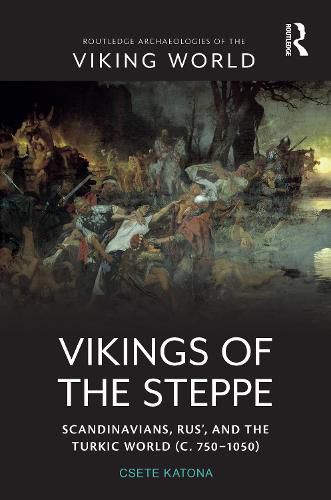Readings Newsletter
Become a Readings Member to make your shopping experience even easier.
Sign in or sign up for free!
You’re not far away from qualifying for FREE standard shipping within Australia
You’ve qualified for FREE standard shipping within Australia
The cart is loading…






The primary focus is the steppe influence on the development of Scandinavian-Rus’ culture. It illustrates the effects of Turkic (nomadic) cultures on the evolving Scandinavian-Rus’ communities in their military technology and tactics, as well as in everyday customs, ritual traditions and religious perceptions, whilst paying attention to the politico-commercial necessities and possible communication channels tying these two cultures, normally considered to be distinct, together. The arguments are supported by a multi-disciplinary analysis of diverse historical and archaeological materials occasionally supplemented with linguistic evidence. The result is a comprehensive evaluation of the relations of the Scandinavians active in the ‘East’ had with Turkic groups, and bring (the so far neglected) steppes into Viking studies in general.
The book will fill a serious scholarly gap in the field of Viking Studies and will be read by both academics and students interested in the archaeological and historical sources concerned with the traditions of the ‘Eastern Vikings’.
$9.00 standard shipping within Australia
FREE standard shipping within Australia for orders over $100.00
Express & International shipping calculated at checkout
The primary focus is the steppe influence on the development of Scandinavian-Rus’ culture. It illustrates the effects of Turkic (nomadic) cultures on the evolving Scandinavian-Rus’ communities in their military technology and tactics, as well as in everyday customs, ritual traditions and religious perceptions, whilst paying attention to the politico-commercial necessities and possible communication channels tying these two cultures, normally considered to be distinct, together. The arguments are supported by a multi-disciplinary analysis of diverse historical and archaeological materials occasionally supplemented with linguistic evidence. The result is a comprehensive evaluation of the relations of the Scandinavians active in the ‘East’ had with Turkic groups, and bring (the so far neglected) steppes into Viking studies in general.
The book will fill a serious scholarly gap in the field of Viking Studies and will be read by both academics and students interested in the archaeological and historical sources concerned with the traditions of the ‘Eastern Vikings’.